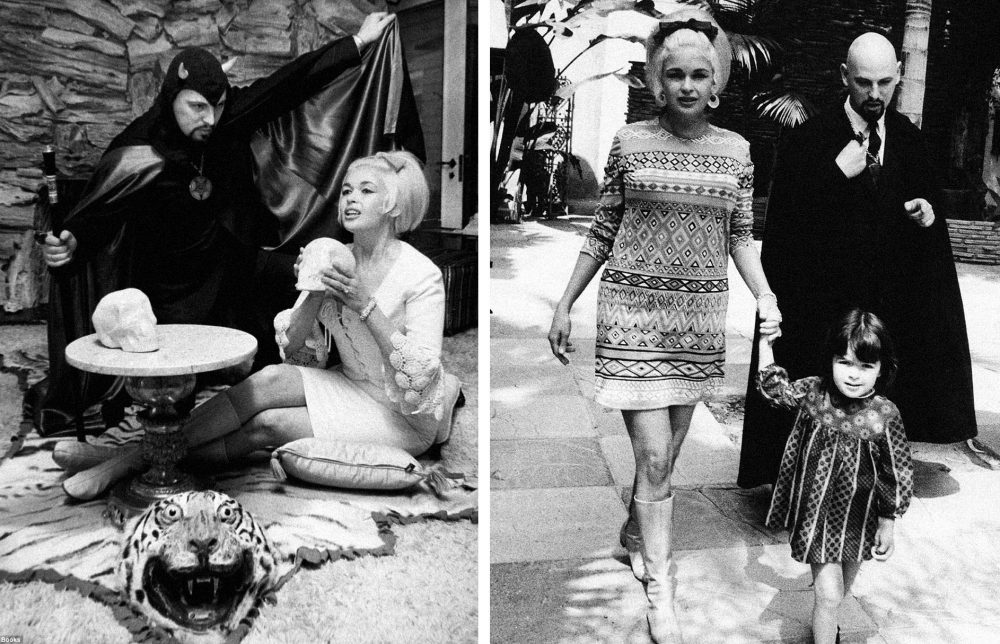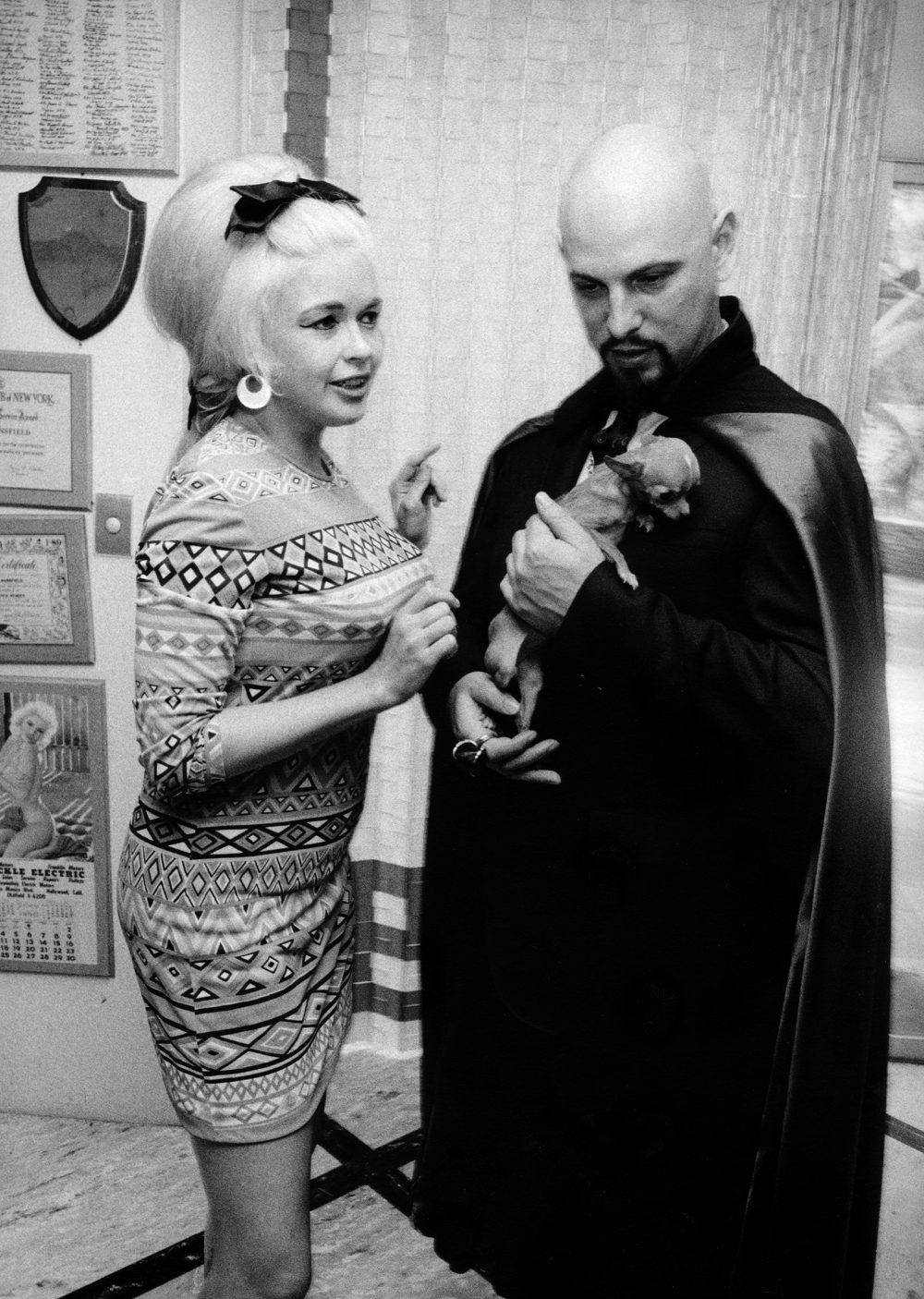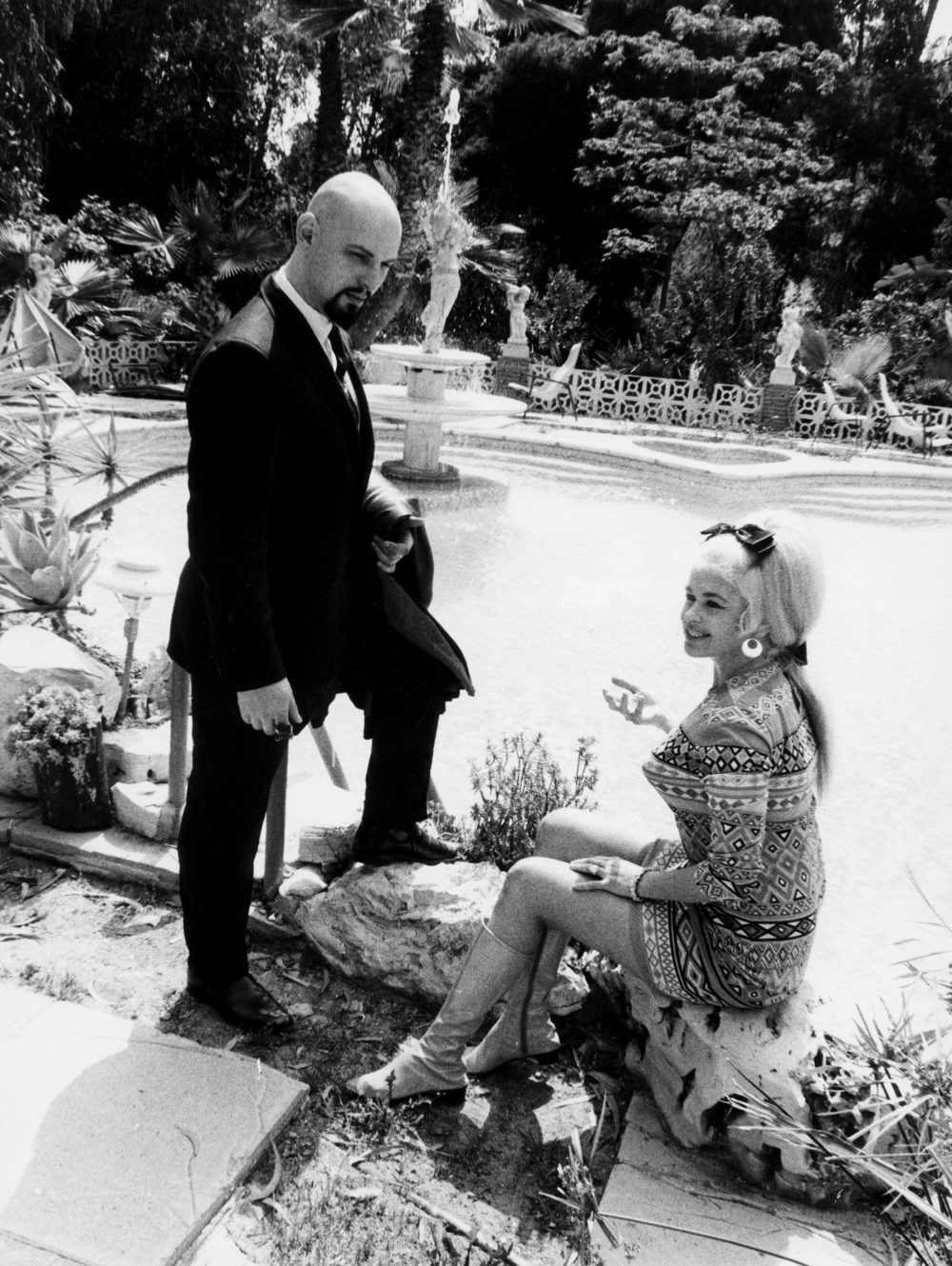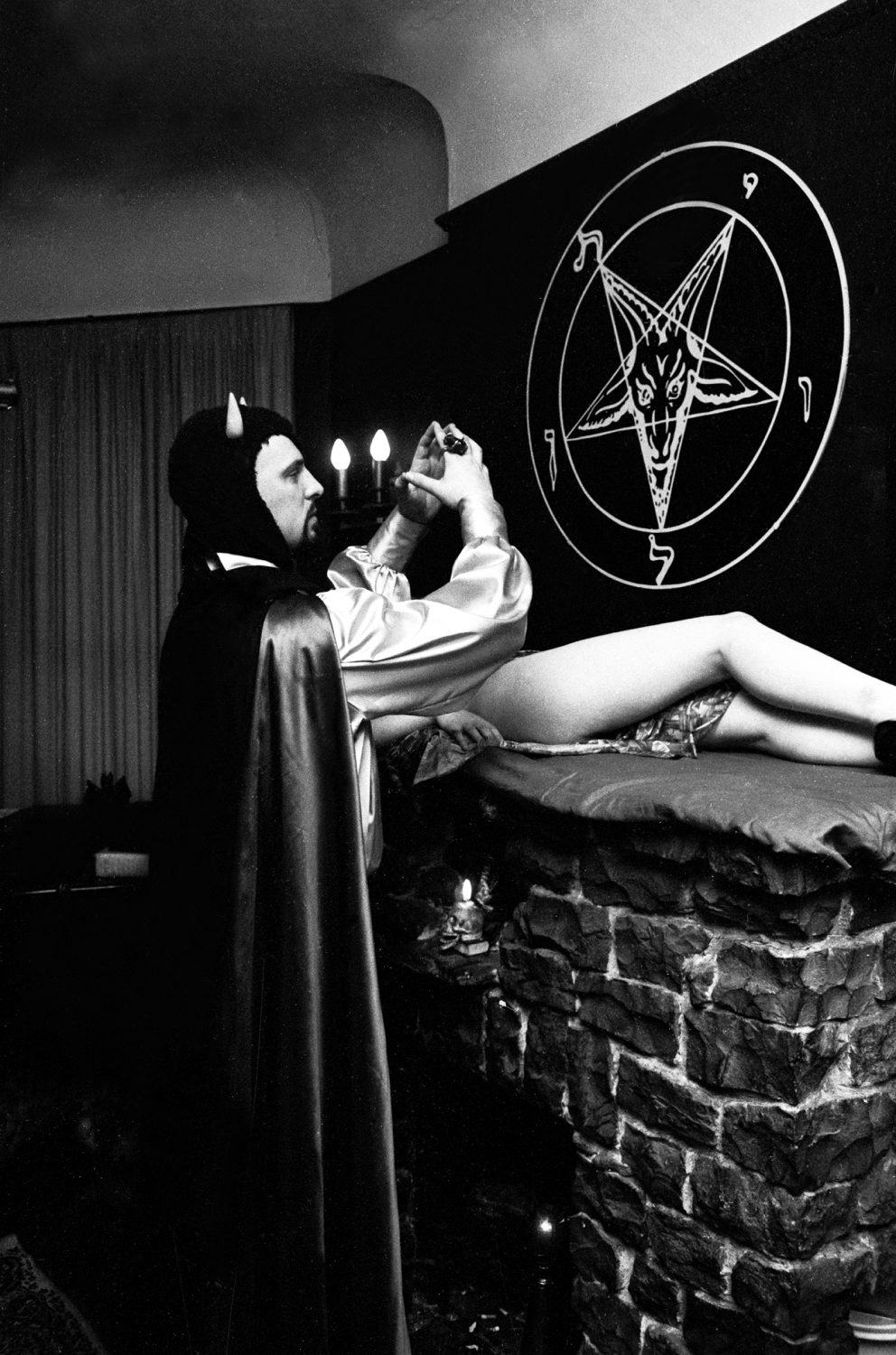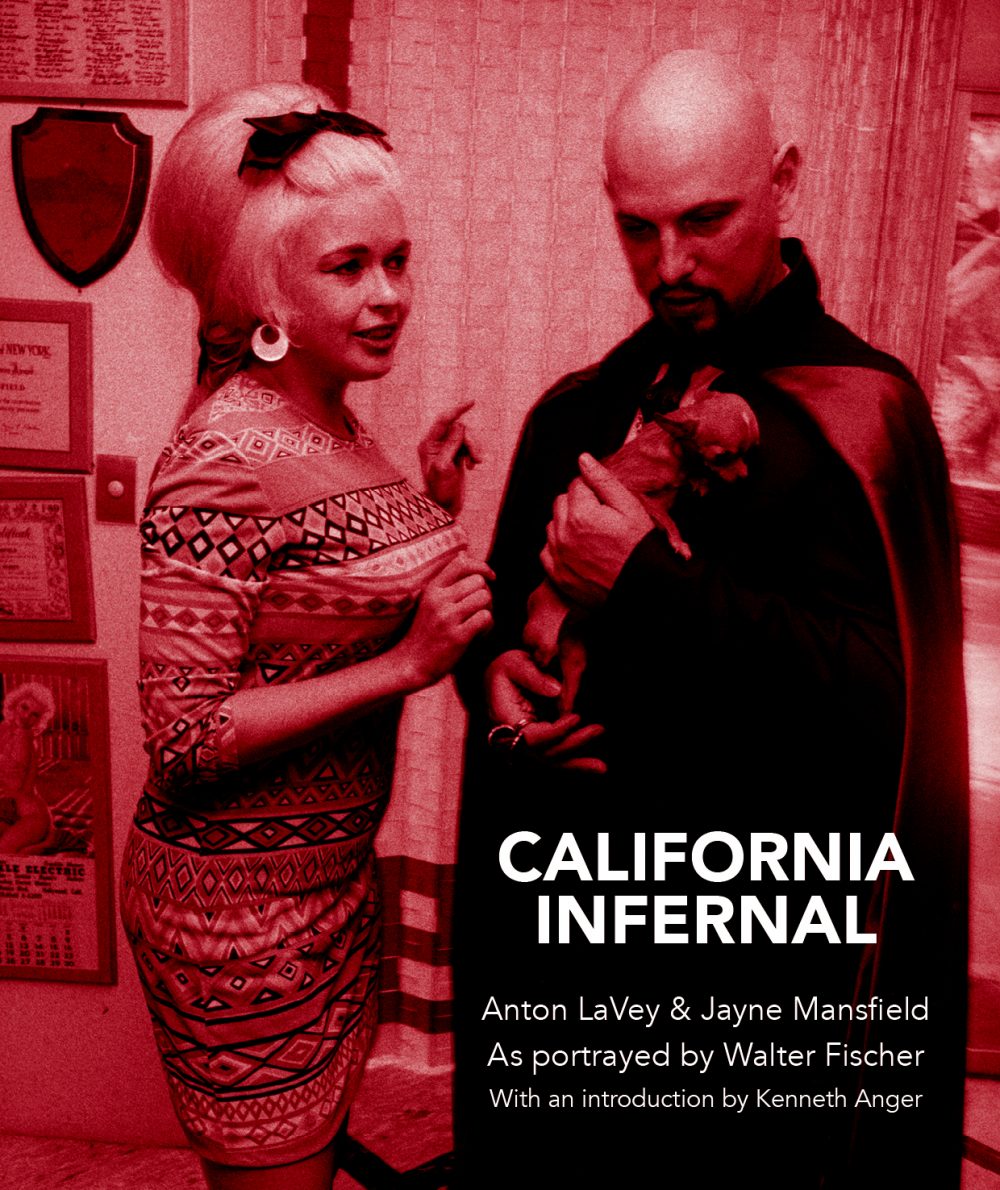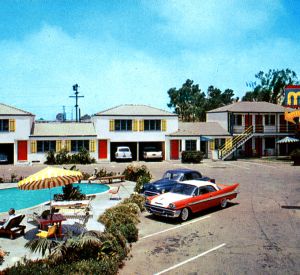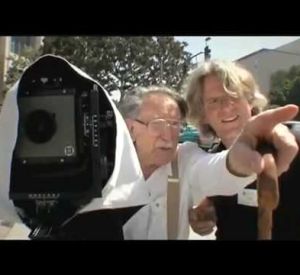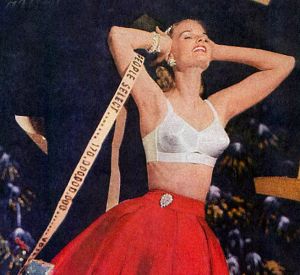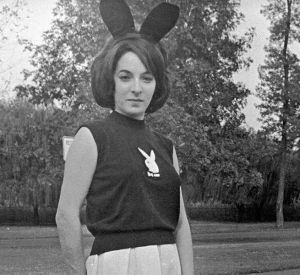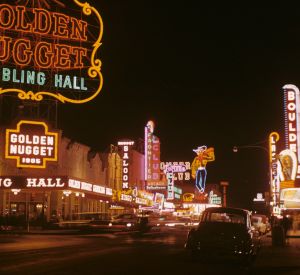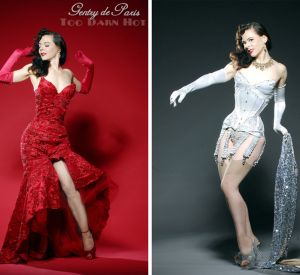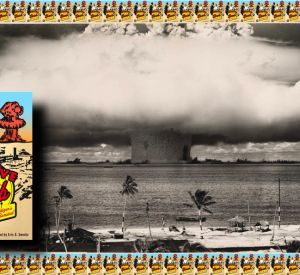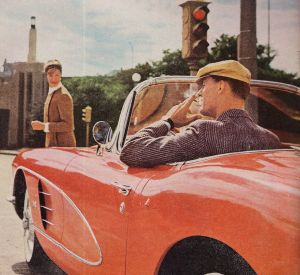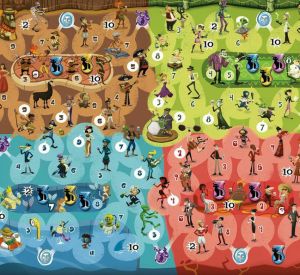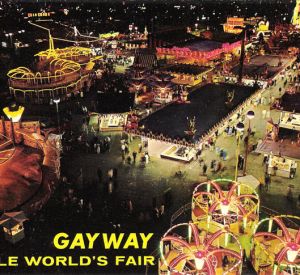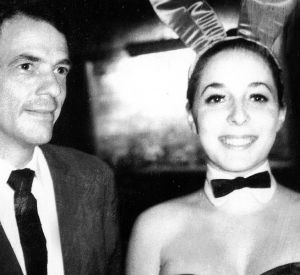When Satanist Anton LaVey seduced Jayne Mansfield
Halloween is here, a liminal time when the boundary between this world and the nether realms can more easily be crossed by all manner of evil spirits. Lest one be carried away by them, tradition dictates that we mere mortals disguise ourselves to fool the spirits into believing we are one of them.
It was part of a tradition the Scots called “guising.” And while the Old World may have invented it, the greatest guising in history came out of the land of make-believe called California. And the greatest of the guisers was Anton LaVey, an alleged former carnival worker who wrapped himself in the Devil’s cloak and never looked back.
The legend of LaVey began with his founding of the Church of Satan on Walpurgisnacht – April 30th– 1966. It grew out of a lecture series he held in his home on occult and Fortean topics such as Bigfoot, ESP, carnival freaks, and, of course, black magic and the Devil.
Appropriating the symbol of the Devil in opposition to societal mores supposedly based on Christianity, LaVey’s brand of Satanism preached “indulgence not abstinence.” And this was devoured by late 1960s “free love” counterculture types who chafed at the previous generation’s button-down values. LaVey’s church gained wide acclaim, driven largely by publicity, with LaVey making a number of flashy Dracula-caped appearances on local and national talk shows and performing Satanic weddings, funerals, and rituals featuring nude women for the paparazzi.
Like all ephemeral things, though, the Church of Satan’s golden age didn’t last very long. A schism in 1975 fractured and sowed discord amongst the Church’s base. Acrimonious relations between the church and LaVey’s daughters over the ensuing years assured that it would be permanent. And any positive public sentiment LaVey’s created for his church in the 1960s vanished completely when Satanists were falsely accused of the ritual abuse of children during the Satanic Panic of the 1980s.
Still, the legend of LaVey persisted throughout, largely cultivated by LaVey himself. At various points, he claimed to be a police photographer, a psychic investigator, and a lion tamer with the Clyde Beatty Circus. His pet lion, Togare, reinforced that last claim although none of those claims have ever been substantiated.
Never one to be satisfied with small boasts, LaVey once claimed a licentious relationship with Marilyn Monroe while working as an organist for her burlesque routine at the Mayan Theater. As proof, he once produced an autographed copy of Monroe’s famous Golden Dreams calendar. LaVey’s second wife, Diane Hegarty, would later claim she forged that signature. Mayan Theater operator Paul Valentine also denied that LaVey or Monroe had ever worked for him.
LaVey himself made no secret of his use of glamour and illusion. In the context of psychodrama, he found it a useful aggrandizement. In his book Satan Speaks, he says “I’m one helluva liar. Most of my adult life, I’ve been accused of being a charlatan, a phony, an impostor. I guess that makes me about as close to what the Devil’s supposed to be, as anyone. It’s true. I lie constantly, incessantly. Because I lie so often, I’d really be full of shit if I didn’t keep my mouth shut and my bowels open.”
Like Anton LaVey, Jayne Mansfield was one the great California guisers whose public persona didn’t match her private one. Groomed as a Marilyn Monroe successor by 20th Century Fox, Mansfield –a natural brunette bleached blonde– affected a Monroe-like manner of speaking and actively played the part of the dumb blonde bombshell for films and the press.
It was inconsequential that she trained as an actor at various universities, reputedly spoke five languages, had award-winning success on Broadway, and claimed an IQ of 163. It just wasn’t what the public was interested in.
Mansfield was a publicity hound and took every opportunity to place herself before the media, often inviting the press into her home and staging calculated publicity stunts. Her favorite was the one she invented: the “wardrobe malfunction,” the most infamous of which is captured in the Mansfield-Loren photo taken at Romanoff’s restaurant in 1957.
LaVey and Mansfield first met in 1966. One version of the story says that Mansfield, after a party, arrived unannounced at The Black House, LaVey’s home on California Street in San Francisco, and demanded to be seen. Another version says it was merely a photo opportunity arranged by publicists.
Either way, it sparked a relationship that remained until Mansfield’s death in a tragic car crash in 1967 – fifty years ago this year. The more fanciful version of the story has LaVey claiming the death was the result of a curse he placed on Sam Brody, Mansfield’s boyfriend, who was driving the car at the time. LaVey himself would die twenty years later of pulmonary edema. His daughter, Zeena, would claim his death was also the result of a curse she placed on her father.
Despite this, or perhaps because of it, the legends have outlived their creators and in the strange alchemy of their meeting fifty years ago, their stories combined to create an urban folklore people still talk about today.
Intrigued by the strange alchemy is Carl Abrahamsson, a Swedish musician, photographer, film maker, publisher and Satanist who has held a life-long fascination with both Mansfield and LaVey. As part of his punk band, The White Stains, Abrahamsson recorded the song “Sweet Jayne” about LaVey’s relationship with Mansfield. Genesis P-Orridge, of the band Throbbing Gristle, suggested to Abrahamsson that LaVey would enjoy a copy. LaVey responded with an invitation to The Black House, resulting in a friendship and mentorship with Abrahamsson that would last until LaVey’s death in 1997.
This year, Carl’s company, Trapart Books, published the second edition of California Infernal, a wonderful book of photographs documenting the LaVey/Mansfield relationship by German paparazzo Walter Fischer. Stationed in Hollywood, Fischer covered both Mansfield and LaVey extensively. Following Fischer’s death, his body of work came into the possession of Alf Wahlgren, a fellow Swede and collector of LaVeyana, who brought the collection to Abrahamsson.
Recently, I got in touch with Carl to discuss his book, Mansfield, LaVey, Satanism, and the nature of legends.
Thank you for taking time to talk with Ultra Swank, Carl. Tell us a bit about your background and how it relates to the production of your book California Infernal.
For me, it’s been a strange time warp that I’ve enjoyed greatly. Many of these images were so seminal to me in my teens/formatting days. So it almost feels like they are coming back to haunt me. Especially having been in that ritual chamber myself at a later date. I wouldn’t say it feels like home, but it sure adds another fascinating dimension in my mind.
So there’s a personal connection beyond your involvement as publisher. So when and where did you first encounter these images ? How did they influence you ?
I would say I saw some of these images in Swedish men’s magazines from the 1970s. After all, Walter Fischer was a well syndicated photographer. In the mid-80s I was like a funnel or a sponge for trash culture from all over the world, but mainly from the US. I also had a strong interest in all things occult. So LaVey was like the quintessential synthesis of everything I found cool. Also, being a movie buff, I loved (and still love) American B-movies, and Jayne Mansfield has sort of always been the reigning queen. So seeing those images of the two of them together was just like a meltdown. “This is TOO cool!” And it stuck. I may have changed in different directions since then but the core remains, as it does in terms of all essential imprints. That’s why California Infernal has been such a great and trippy adventure for me. Also getting Kenneth Anger involved was amazing, as I met him on the very same first trip to the US in 1989 that I met LaVey on. Full circles, over and over. It’s like my subconscious is pressing a REPEAT button. Maybe it is?
And you knew LaVey personally. How often did you interact? What remains most in your mind about him ?
I went on three trips to San Francisco and on those trips visited the Black House several times, had dinners, et cetera. When I was in Sweden we communicated via fax or letter, specifically when I was preparing for the Swedish translation of the Satanic Bible, which was published in 1996. The last time we met physically was in 1993. He was very supportive of my antics in writing and publishing. So he was an initial distanced source of inspiration that turned into a tangible friend and teacher in a way. He had ways of transmitting things between the lines that were very helpful in my own magical process. To him it must have been weird and also hopefully helpful to have this Swedish brat coming over, eager to listen and learn but also to manifest things and create philosophical tangibility for the future.
Obviously, you didn’t know Mansfield. Does your fascination with Mansfield come from the same place as your initial fascination with LaVey? What remains most in your mind about her and her public legacy ?
Yes and no. LaVey fascinated as an actual inspiration, as someone who led a very interesting life and came up with new things within a sphere that was and is genuinely interesting to me. Jayne is fascinating more as someone who worked hard to achieve what she wanted in a very fickle world/sphere. Her story is more tragic in many ways. She wasn’t always on top. But I still like most of her movies a lot.
Though I disagree with his philosophy, I find LaVey a fascinating individual, a larger-than-life carnival showman. No other publicly engaged Satanist has captured the public imagination the way LaVey did in the late 60s. Why do you think that is ? Was it a matter of times of cultural upheaval being more receptive to LaVey’s permissive ideas presented in a flashy new way ? Or is it something else ?
I think the main impact was that it was a double whammy at the time – not only hitting Christianity as such but also the allegedly more open-minded hippie communities. LaVey at this time was both super-radical and traditional-conservative, depending on which camp was looking or being looked at. Although individual liberty was supported and encouraged, LaVey didn’t want that to end up in wishy-washy drug philosophies. And that’s basically what happened. Although many great upheavals and changes came out of the late 60s, there was also an all-too-human backlash where most people gradually espoused normality on one hand and heavier drug use on the other. LaVey was for indulgence, and neither abstinence nor compulsion. He was the man in the controversial middle in extreme times, just as he would have been extreme in lukewarm, safe times – the perspective of the Third Side, the Adversary etc. He was that. he used it. And he enjoyed it. That together with a surface that very well reflected the humorous as well as the terrifying (to many, I’m sure) made him a great public Satanist.
Yet LaVey’s Satanism borrows largely from the ideas of others — Nietzsche, Ayn Rand, Ragnar Redbeard. All of these can be studied and used independently of Satanism. So, is theatricality, glamour, and psychodrama the fundamental transformative elements that makes LaVey’s Satanism more than the sum of its parts ?
Yes. I think all of those things. And later on he was very active in concocting his own concepts, which I guess is what happens. First you make a splash with a synthesis that has made you tick. And then you evolve and crystallise your own gems. The same was true for Crowley pre-sex magic insight, which was Golden Dawn-infused, and post-sex magic insight, which was decidedly more Taoist and cosmic. I would say yes to LaVey’s overall concoction being the “glue”: a noir kind of libertarian occultism with decidedly hedonistic streaks. But the fundamental transformative element in his system, according to me, doesn’t lie there; it lies in the realisation of “Satan” as a symbol – an adversarial principle that evokes manipulatory powers and a very sincere kind of honesty. Eventually, all magical systems boil down to an empowerment of the individual. If they don’t they’re just another cult where smart people make use of not so smart people.
Currently making the festival and arthouse theater rounds is the film Mansfield 66/67. Ostensibly, it’s about Mansfield’s and LaVey’s relationship. But the makers tout the film as “a true story based on rumor and hearsay.” In other words, it’s more about the urban folklore of the relationship than the actual facts of it. Prior to that, Kenneth Anger’s oft-debunked book Hollywood Babylon was similar. The public is clearly more interested in the legend than the actual truth. What’s your perspective on that ? Is it just because it’s more fun ? Or is there something else going on in the folklore?
When it comes to a sphere where previously “normal” humans are catapulted into a “demigod” status (as in “Hollywood”, for instance) people’s projections (usually based on their own disgruntled emotions) take off and leave rationality, logic, decency etc behind. It’s as if that’s the real price you pay when you’re a celebrity. You’re open to be used and abused in the public sphere as it sees fit. So perhaps that term – “larger than life” – simply means that there are other rules at play for those so successful (most often unsuccessfully or unhappily so). I think this has been a constant in the human mind/need. Ventilation for the disgruntled. The figure of the jester comes to mind. Anger used a language directly inherited from Louella Parsons and similar women at the time: snide and cynical gossiping. And it works as long as the readers somehow feel that the victims deserve it… (“They shouldn’t complain because they have everything as celebrities… Look at them failing…”). The film about Jayne is an attempt at doing that. But it’s not a mean film. It’s just camp — perhaps actually doing Jayne justice that way? In the sphere of celebrities, whether something is true or not is besides the point. This is extremely evident in today’s culture, in which there are celebrities that haven’t actually done anything to merit their status. Any references made to them in the public sphere is not to them as real individuals because in a sense they aren’t real individuals. They are just targets for projection.
The lore says that Mansfield was a card-carrying Satanist. You made a point of shattering that illusion in California Infernal by requoting Mansfield’s own assertion that she wasn’t. Why do that when the legend is more useful to Satanists and the public is more interested in the legend ?
I can’t see how it would be more useful to Satanists if we knew for a fact that Jayne was a member (or not). It’s the same thing with that interesting photo with LaVey and Sammy Davis Jr. Was he a member? Was he not a member? As you say, the legend can be intriguing but the Church of Satan wouldn’t really be interested in members chasing romantic legends. They are interested in individuals who are interested in themselves.
Let’s go back to your book. I understand why you needed to make California Infernal for yourself but why does the public need this book ?
It pops up out of an in-between area which is fascinating. Is it occultism? Is it PR and pop? Or is it just California Infernal, which could mean all of those things. I’m happy to say that my initial desire to make the book turned into a publisher’s intuition that it would also interest others. I’m not sure anyone “needs” the book at all. But I’m happy to say there are many who find it entertaining. It’s a nice slice of weird Americana pie.
Most of the Fischer photos are typical photojournalism of the day. Why present them as art in an art book when most of the images don’t impact as art ?
For me, the mere phenomenon of both these proto-American individuals and the relationship between them is mind-boggling and transcending. That is art. They were also consciously aestheticised by their own design and by other people’s projections. Walter Fischer simply facilitated a documentation of the phenomenon and the people involved. The art in question is the actual sum of LaVey and Mansfield together.
How difficult was it to edit down the Fischer-Wahlgren collection to a publishable form ? Is there anything that wasn’t included that you wish you did ?
The book contains pretty much everything we wanted. Fischer, as most photographers, shot multiple images of the same scene, happening, or moment. We just picked the best of the best.
Currently, California Infernal is in a second edition with a pink “Mansfield Edition” cloth cover. Why a second edition ? Is it to commemorate the 50th anniversary of Mansfield’s death ?
No, it was simply because Alf had more images of Mansfield in color. We changed our mind after the first edition and just wanted to include another eight pages. And so we did.
Was there anything you accomplished with the second edition that you thought you didn’t with the first ?
Honoring Jayne a tad bit more.
Of all you’ve seen of the collection, what’s your favorite image ?
I’d say the cover image: Jayne and Anton together, and him holding her Chihuahua. It’s an incredible image.
Thanks, Carl, for your time and insight. And thanks for a great book.
California Infernal: Anton LaVey & Jayne Mansfield as portrayed by Walter Fischer
Introduction by Kenneth Anger
With forewords by Carl Abrahamsson and Alf Wahlgren
Trapart Books
Second Edition, 2017
US $39.95; kr250
ISBN 978-91-983243-1-0
Above: California Infernal – Walter Fischer documents the LaVey/Mansfield relationship — © Trapart Books
Above: California Infernal – Walter Fischer documents the LaVey/Mansfield relationship — © Trapart Books
Above: California Infernal – Walter Fischer documents the LaVey/Mansfield relationship — © Trapart Books
Above: California Infernal – Walter Fischer documents the LaVey/Mansfield relationship — © Trapart Books


